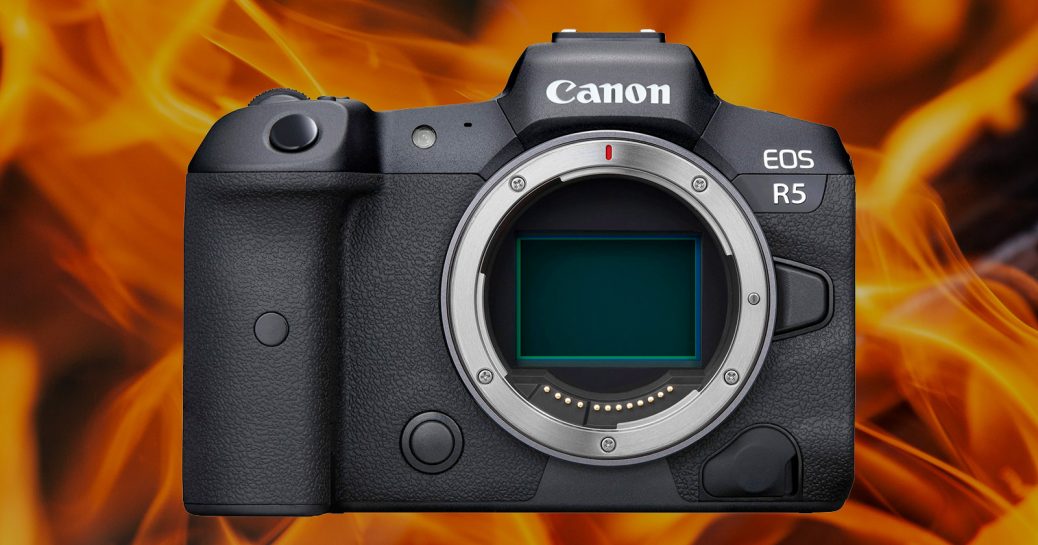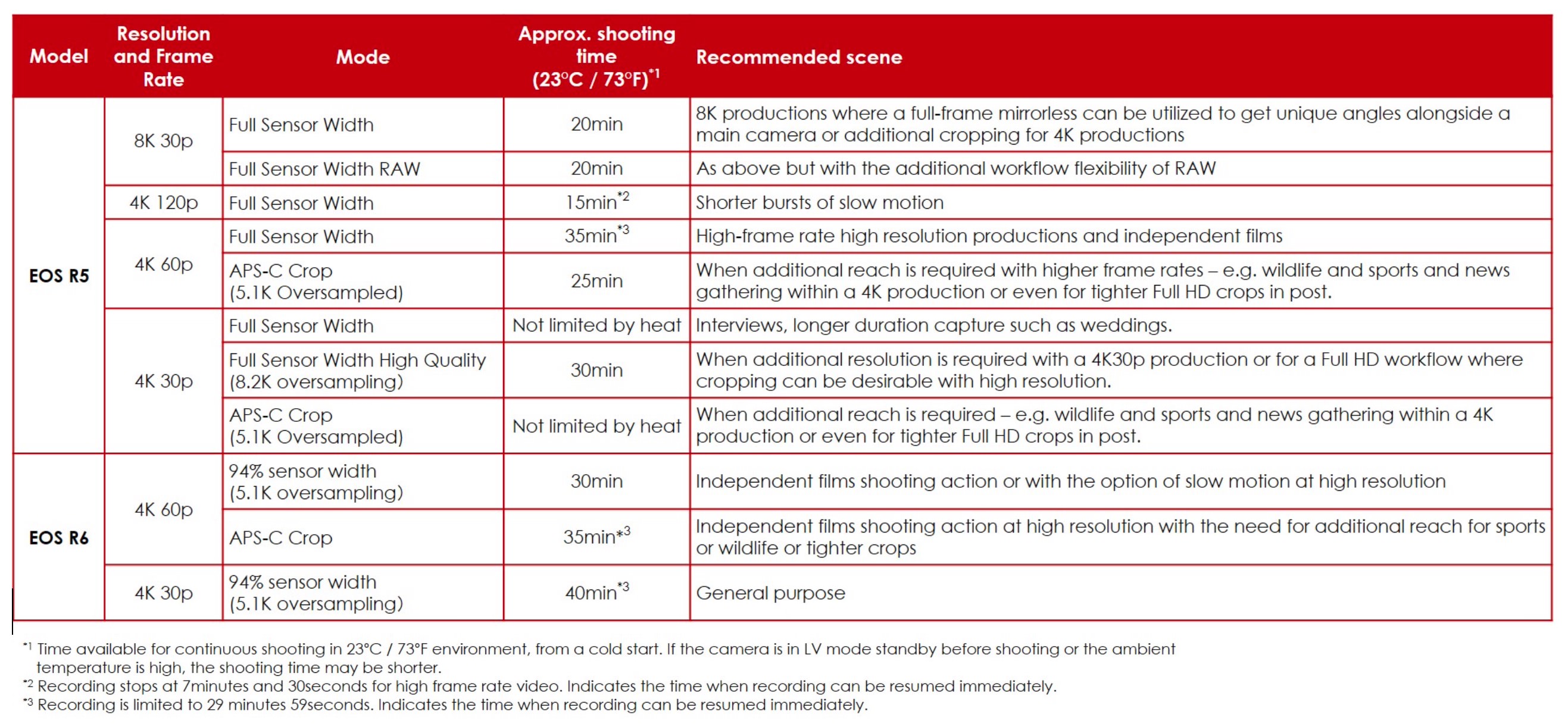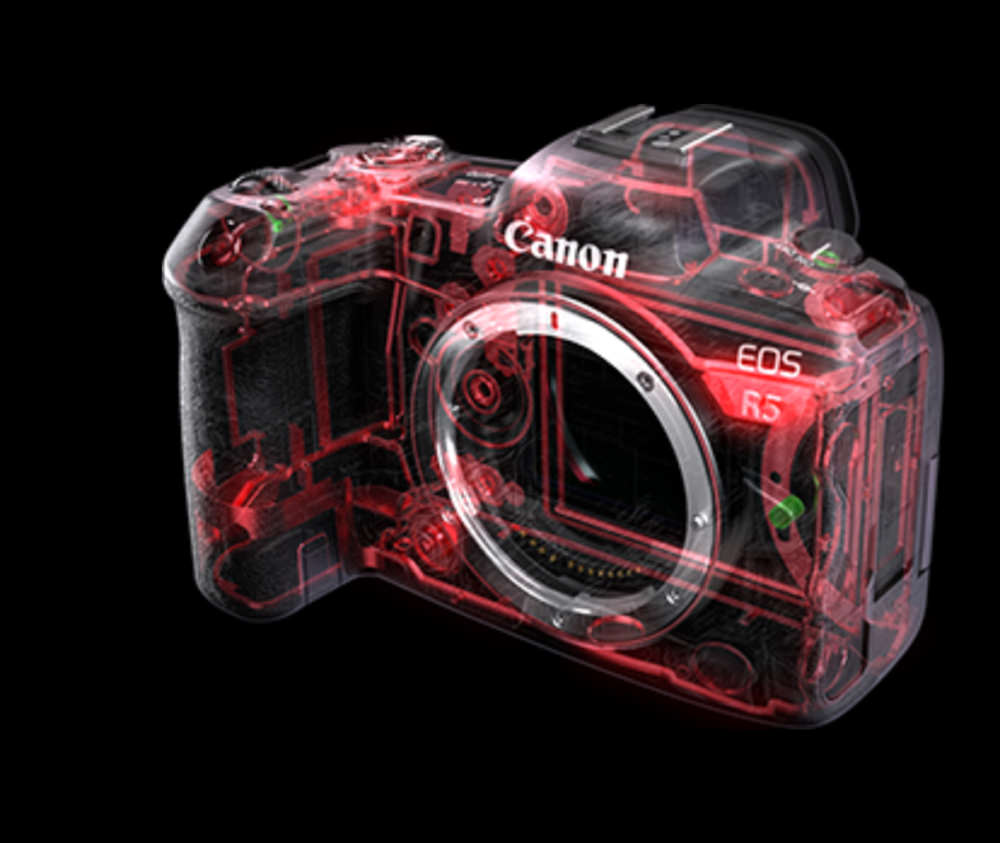Canon Clarifies Overheating Concerns of its EOS R5 and R6 Cameras
Canon sent out a media alert to press addressing the overheating concerns that have come up regarding its new EOS R5 and R6 cameras. The statement explains why it opted not to add an internal fan and shares a few tips on how to keep the heat down when shooting 4K and 8K video.
The previous charts show the maximum record times for 8K RAW and 4K/60p from cold start, under ideal conditions, followed by the maximum record time after the camera is allowed to cool off for 10 or 20 minutes.
Having a maximum recording limit of 20 minutes on 8K RAW and 30 minutes on all modes is totally understandable. Not every camera maker has followed Panasonic’s lead yet by removing the standard 30 minute limitation on hybrid cameras, and some limit on the record time was expected. It’s the recovery times that look the worst.
Canon addresses the lack of a fan – such as the one found on Panasonic’s S1H camera – saying it decided to not include a fan within the body of the camera to maintain the ‘compact size, lightweight construction and weather resistance’ of the EOS R5 and EOS R6.
Even after a 20-minute break from shooting, the camera is only expected to shoot for 8 minutes before overheating and shutting down once again; if you can only rest it for 10 minutes, you’ll only get 3 more minutes of shooting.
For stills photographers who would like the R5 because of its 45MP resolution and ultra-fast maximum shooting speeds, this isn’t a huge issue. If you won’t be shooting much video, you don’t have to worry about it. But for the 8k-budget filmmakers that Canon is targeting with this 5-series camera, limitations this dire are considered, by some, a total deal-breaker.
As for what you can do to help minimize the time it takes for the EOS R5 and EOS R6 to overheat, Canon shared the following bullet list:
- Set Overheat Control function to “ON” (default). When the overheat control function is enabled, the movie size and frame rate are automatically changed while the camera is in standby mode to suppress the rise of the internal temperature.
- Between recordings, it is recommended to turn off the camera.
- Position the camera out of direct sunlight.
- Use an external fan to dissipate heat
There has been a lot of debate about whether the limitations described by Canon can be described as overheating issues. In the end, we won’t know how serious these issues are until the full reviews begin to come out.
However, at the very same time, we can’t see this compromised feature as the highlight of the camera. Maybe is totally fine for a personal project, but on commissioned work reliability is king, and even with two cameras overheating should be a real pain, especially in cities like Tokyo, when in summer the external temperature is about 35° Celsius.




